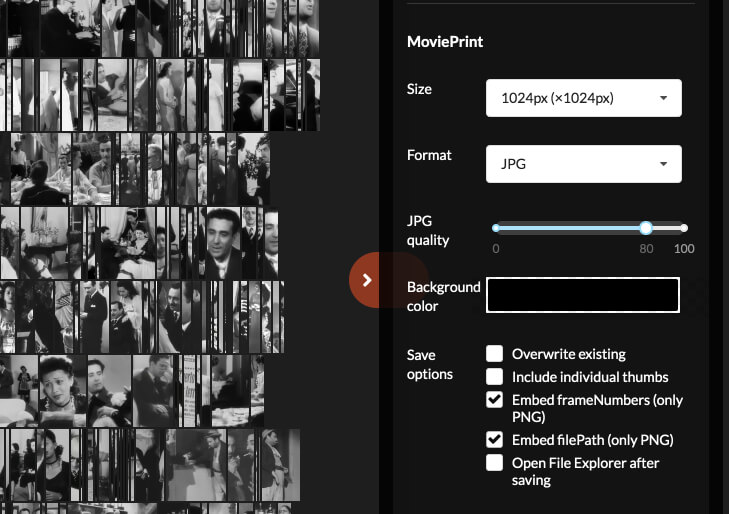
Drag-and-drop operations are supported and this makes things so much easier those who prefer navigating tot the files can do so using the on-screen controls for adding movies. Users can choose to add a single video clip or multiple ones as the app offers batch processing capabilities. Add one or multiple video clips and preview the resulted screens in the resizable viewing area
#Movieprint app movie#
MoviePrint promises to deliver a desktop alternative to creating movie screens, in a customizable formula, both for the video frame analysis, as well as for the resulting image grid that contains the thumbnails. Since it is open source, you may verify that claim by going through the source code.Dealing with video files and wanting to generate a clip preview through thumbnails or frame prints can be done in many ways and there are multiple solutions, especially in the online environment.

The developers promise that they don't collect any data. The huge size is a minus in my opinion but that is the only thing that I find problematic. Customization options are available in abundance and should satisfy most users.

The program supports a good range of input formats, and works well even if you drop large movies into the interface. MoviePrint is a well designed open source application to create video summaries from any type of video file. Other customization options include defining custom ranges for the thumbnail creation and to select frames individually. Timeline view displays each thumbnail next to each other which results in a display style that may work well for certain video files and not so well for others. You can switch the default view to timeline view for each individual video. Other options provided include adding a header to the output image to display file path, file details or timeline information (all individually selectable), and to show frames or the timecode for each individual thumbnail. While it makes little sense to create a 1x1 grid, you may want to experiment a bit to find the perfect setting for your use cases. You may change that to any number between 1 and 20 for columns and rows. The program uses a 4x4 grid by default to display 16 thumbnails of the video. The settings list customization options for the output. Note that the file path gets embedded in the png file by default you may change that in the settings as well and change the default save directory to the folder the video is stored in. You may change the output format, size, and path in the program settings. MoviePrint saves the selection in the png format to the desktop by default there is no confirmation or prompt. You can save any video summary creation with a click on the save button. You can add more videos at any time and switch between each using the sidebar menu. The sidebar displays all loaded video files if you added more than one. The application parses the video, creates thumbnails automatically that depict scenes, and displays all thumbnails that it created in the end in the interface.

Drag and drop one or multiple video files into the program interface to get started. MoviePrint is simple to use, at least in its base configuration.
#Movieprint app windows#
It will add a shortcut to the Start menu of Windows but opens without installation dialog.
#Movieprint app archive#
The Windows version is provided as a zip archive that you need to extract. Large file sizes usually indicate the use of Electron, and that is the case here as well.
#Movieprint app download#
The application has a zipped download size of 117 Megabytes (Windows) and 132 Megabytes (Mac) respectively.

The first thing that you may notice is that MoviePrint is a huge application. The program is not the first of its kind we reviewed Video Thumbnail Maker in 2008, ImageGrab in 2010, Auto Movie Thumbnailer in 2010, and the Macintosh exclusive Thumber in 2008.


 0 kommentar(er)
0 kommentar(er)
